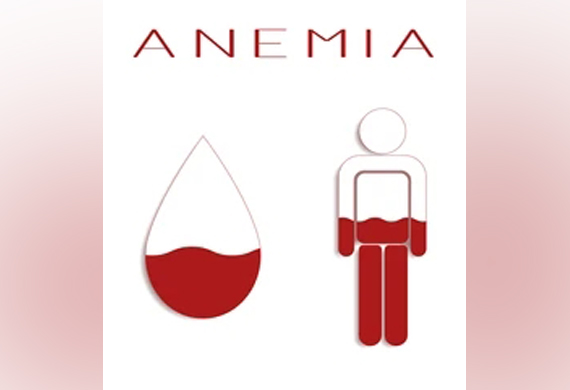
45.51% Bundelkhand Women are Anaemic, says NFHS
By: WE Staff | Tuesday, 28 December 2021
According to the latest National Family Health Survey (NFHS) 5-2019-21, 45.41 % of women in the age group of 15-49 years are iron deficient in Bundelkhand. This is cause for concern, not only for health difficulties, but also for women's mental health issues, which are a primary cause of maternal death.
The national average is 53.8 %, while the state of Uttar Pradesh's is 50.1 %, indicating that the region is in a better condition than the national average, yet this is a cause for concern because over half of the women in this age bracket are anaemic. However, with the exception of Banda district, the results in all of the region's districts have improved since the previous survey in 2015-16.
According to the survey, 41.3% of women in this age range in Jhansi are anaemic, compared to 51.3% previously, and 46.1% in Hamirpur, compared to 54% previously. Jalaun has 44.2% anaemic women, compared to 64.8% previously, Lalitpur has 38.1% anaemic women, compared to 49.8% previously, Chitrakoot has 46.6% anaemic women, compared to 61.4% previously, Banda has 52.2% anaemic women, and Mahoba has 49.4% anaemic women, compared to 64.8 % previously.
The data shows that the districts of Chitrakoot and Mahoba, as well as the rest of the country, have done exceptionally well, with the exception of Banda, where the figures have risen.
Anemia causes teenagers' behaviour to shift, according to psychotherapist Dr Shikafa Zafrin. In addition, it is the source of their anxiety, sadness, anger, and frequent headaches. The anaemic females have low self-esteem and are unable to concentrate in class. It is critical that it be discovered early on by examining haemoglobin levels, which can be improved with medication and a healthy diet. It's not just girls from low-income families who suffer from anemito control. In all district hospitals, PHCs, and CHCs, free iron supplement drugs and blood tests are offered.
In addition, school-based awareness campaigns are held on a monthly basis. Hospitals, as well as Anganwadis, ASHA, and ANM personnel, have red and blue iron pills. In addition, tablets are being made available in classrooms. Pregnant women should take the red tablet for 180 days during their pregnancy, while girls aged 10 to 19 should take the blue tablet once a week on Mondays.
Most Viewed
- 1 Women's Health Startup HerMD Closing Doors Amid Industry Challenges
- 2 5 Famous Women in Indian Armed Forces
- 3 Saudi Women No longer Require Male Permission for Clothing Choices, says Prince MbS
- 4 Kolkata Medtech Startup Innovodigm Raises Rs 5.5 Crore Seed Funding Led by IAN Group
- 5 Yamunanagar's Kashish Kalra Honoured after Securing 111th Rank in UPSC Civil Services Exam
- 6 Madurai Appoints Its First Woman Corporation Head
- 7 IAS Vijayalakshmi Bidari Appointed as the new Nagpur Divisional Commissioner
- 8 American Entrepreneur Lucy Guo Overtakes T Swift to become Youngest Female Billionaire
- 9 ICC Women's World Cup 2025 Trophy Showcased at Indore's Holkar Stadium
- 10 Aparna Saxena's Beauty Venture AntiNorm Launches in India
- 11 Vidya Nataraj Co-Founded BlueStone Jewellery & Lifestyle files IPO
- 12 5 Women Freedom Fighters of India
- 13 Dr. G Krishnapriya appointed as CEO for Trichy
- 14 M3M & Sirona Partner to Introduce Menstrual Hygiene Vending Machines in 15 Locations
- 15 Punjab Govt launches SHE Cohort 3.0 Supporting Tech-led Women Startups
- 16 Indian origin Lawyer, Sweena Pannu appointed as the US New Superior Court Judge
- 17 The Aurora Tech Award recognizes 4 Indian Women-led Startups
- 18 Kerala's Republic Day parade featured an all-female tableau
- 19 Manisha Kabbur Becomes Karnataka's First Woman International Karate Coach
- 20 Director K. S. Ravikumar's Daughter Maalica Ravikumar Launches Life Coaching Company 'Evergrowth Academy' for Women
- 21 Leezu's Raises Pre-Seed Funding to Accelerate Growth in Sexual Wellness Industry
- 22 Sattu: Super-easy summer drink for PCOS gut healing
- 23 Swathi Nelabhatla creates Sitha App, India's First Women-Exclusive Gig Platform
- 24 7 Timeless Female Kathak Dancers & their Iconic Legacies
- 25 Meet 7 Iconic Women Architects of Modern India & their Most Impactful Work
- 26 This Woman-led Insuretech Startup is Helping Bridge the Education Financing Gap in India
- 27 Women Leaders Share Lessons Learnt from India Women's WC Win
- 28 5 Enterprising Women Founders Powering Singapore's Tech & Innovation Landscape
- 29 4 Women. 4 Stories. One Vision for Smarter, Stronger Healthcare
- 30 Global Gender Gap Narrows to 68.8%, But Full Equality 123 Years Away: WEF Report 2025
- 31 Changemakers: 7 Women Entrepreneurs Taking the Make in India Movement Forward
- 32 Meet Lucy Guo, The Youngest Self-Made Female Billionaire Disrupting Tech
- 33 How Women are Driving India's Festive Online Shopping Surge


.jpg)



